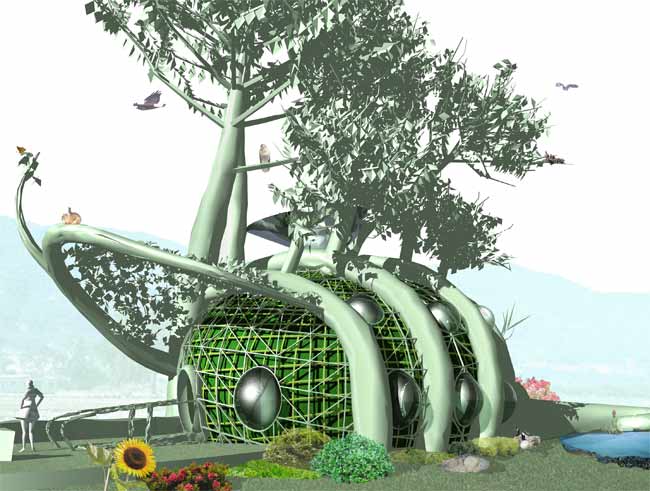Live Architecture: Grow Your Own Home

Tolkien's hobbits would feel right at home in new dwellings made out of living tree roots and designed to protect inhabitants from earthquakes. The homegrown architecture is just one of many eco-structures a new company hopes to roll out worldwide.
The concept of coaxing living trees into useful objects, sometimes called tree shaping, arborsculpture, living art or eco-architecture, isn’t new. But now engineers and plant scientists from Tel Aviv University have taken their leafy designs to the next, and more practical and playful, level.
Pilot projects under way in the United States, Australia and Israel include streetlamps, gates and playground structures made entirely from trees, as well as hospital park benches that grow their own foliage for shade.
"Instead of using plant branches, this patented approach takes malleable roots and shapes them into useful objects for indoors and out," said Amram Eshel of Tel Aviv University in Israel.
A home built from trees, the researchers said, would be a natural storm protector. "After earthquakes and after tsunamis the only structures that still survive are trees," said Yaniv Naftaly, director of operations at Plantware, a company founded in 2002. Naftaly told LiveScience the same sturdiness should apply to tree-made homes. Eshel and TAU colleague Yoav Waisel are working with Plantware to commercialize the leafy designs. The team found that certain tree species grown aeroponically (in air instead of soil and water) have roots that don't harden. Once the malleable, so-called soft roots grow long enough in the lab, they are molded around metal frames in the shape of a playground or park bench.
Then the root tips get tucked into the ground, a process that triggers so-called lignification in which the roots start to harden and grow thicker and thicker. The leafy buds supported by the roots begin to grow taller and bushier.
In the near future, they say, entire homes will be constructed with the eco-friendly technology. An engineer by trade, Plantware's CEO Gordon Glazer hopes the first home prototype will be ready in about a decade. The first playground could take root as early as next year.
Get the world’s most fascinating discoveries delivered straight to your inbox.
- 10 Ways to Green Your Home
- Innovations: Ideas and Technologies of the Future
- Top 10 Craziest Environmental Ideas
Jeanna Bryner is managing editor of Scientific American. Previously she was editor in chief of Live Science and, prior to that, an editor at Scholastic's Science World magazine. Bryner has an English degree from Salisbury University, a master's degree in biogeochemistry and environmental sciences from the University of Maryland and a graduate science journalism degree from New York University. She has worked as a biologist in Florida, where she monitored wetlands and did field surveys for endangered species, including the gorgeous Florida Scrub Jay. She also received an ocean sciences journalism fellowship from the Woods Hole Oceanographic Institution. She is a firm believer that science is for everyone and that just about everything can be viewed through the lens of science.


